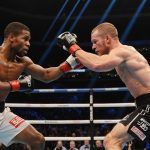As the world of Mixed Martial Arts (MMA) continues to grow, more individuals find themselves drawn to this dynamic sport, both as participants and spectators. With its roots in ancient combat sports, MMA draws from various martial arts disciplines, including boxing, wrestling, and jiu-jitsu. But what distinguishes amateur MMA fighters from their professional counterparts in terms of strategy? Today, we delve into the critical differences between these two realms of MMA, offering an enlightening perspective for seasoned fans and newcomers alike.
Defining the Battleground
In the world of MMA, the rules and regulations differ markedly between amateur and professional fights, directly impacting the strategies employed by fighters.
Also read : What are the best methods for increasing reaction time in combat sports?
Amateur fighters often compete with stricter safety measures, such as shorter rounds and mandatory protective gear, including shin guards and headgear. These elements are designed to minimize the risk of injury and allow less experienced fighters to hone their skills in a controlled environment. As a result, strategies in amateur bouts tend to focus on technical precision and endurance.
In contrast, professional fighters typically engage in longer rounds with fewer safety restrictions, placing a premium on stamina and knockout power. The absence of headgear and other protective equipment means that professionals must be more strategic about their defense and offensive tactics. This is where the expertise built from extensive training and experience comes into play, influencing the fight’s rhythm and tempo considerably.
This might interest you : What effective strategies can be implemented for managing fight day nerves?
Furthermore, the level of competition differs significantly. Amateur fighters might encounter varying levels of skill within the same event, while professional fighters often face opponents with a similar level of experience and training. This difference requires professionals to formulate comprehensive game plans that anticipate their opponent’s strengths and weaknesses.
Training Regimens: The Path to Mastery
Training is the cornerstone of success for any athlete, and MMA fighters are no exception. The training regimen for amateur and professional fighters varies significantly, impacting their strategic approach to the sport.
For amateurs, training often revolves around developing a foundational understanding of different martial arts. They spend time perfecting basic techniques and building endurance to withstand the rigors of a fight. Their training sessions might include a mix of boxing, Brazilian jiu-jitsu, and wrestling to create a well-rounded fighter capable of handling diverse scenarios in the octagon. The emphasis on versatile skill sets means amateurs are often more exploratory in their approach, willing to experiment with different techniques during a fight.
Professional fighters, however, take a more specialized approach. With years of experience under their belts, they focus on refining their strengths and mitigating weaknesses. Their training is intensive and often guided by personalized coaching strategies. A professional fighter might spend considerable time analyzing opponents’ tactics through video footage and tailor their training to exploit specific vulnerabilities. Endurance and strength conditioning become paramount, as professionals need to sustain high performance throughout potentially grueling five-round bouts.
The distinction in training regimens highlights a clear difference in mindset: amateurs aim to learn and adapt, while professionals seek to optimize and execute.
The Role of Mental Toughness
While physical prowess is evident in any MMA fight, the mental aspect often plays an even more crucial role in determining the outcome. The psychological demands placed on amateur and professional fighters shape their strategic approaches in distinct ways.
For amateur fighters, the psychological journey begins with overcoming the nerves and adrenaline of stepping into the cage for the first time. Their strategies often focus on maintaining composure and executing learned techniques under pressure. As they gain experience, amateurs build the mental resilience needed to transition to the professional level.
In the professional arena, the stakes are higher. Fighters not only contend with their opponents but also the pressures of high expectations from fans, sponsors, and personal ambitions. Here, mental toughness becomes a strategic asset. Professionals often employ mental conditioning techniques, such as visualization and mindfulness, to enhance focus and improve in-fight decision-making.
Mental preparation extends to handling unexpected circumstances during a fight, such as recovering from a knockdown or adapting to an opponent’s unexpected strategies. This adaptability is a hallmark of successful professional fighters, who must remain composed under the most intense situations. The ability to stay mentally agile ensures professionals can execute their strategies effectively, regardless of the fight’s direction.
Evaluating Success: From Amateur Dreams to Professional Achievements
Success in MMA is often measured differently at the amateur and professional levels, and these distinct criteria shape the strategic approaches of fighters as they progress through their careers.
For amateurs, success is often defined by personal growth and skill development. The goal is to gain experience, win fights, and build a reputation within local circuits. Amateurs often adopt a learning-centric strategy, focusing on acquiring diverse skills and gaining exposure to different fighting styles. This broad-based approach is essential for navigating the unpredictable nature of amateur competitions.
As fighters transition to professional status, the definition of success becomes more tangible and multifaceted. Professional fighters are driven by financial incentives, championship titles, and the prestige of competing in renowned organizations like the UFC. Their strategies must be meticulously crafted to achieve these outcomes, involving a deep understanding of their competition and a relentless pursuit of excellence.
Professionals must also consider long-term career sustainability. Balancing aggressive strategies with cautious play becomes critical to minimize injury risks and prolong careers. Tactical adaptability, coupled with a strategic focus on career milestones such as title shots and high-profile fights, defines the professional approach.
Ultimately, the transition from amateur to professional MMA reflects a journey of growth, ambition, and mastery. Understanding these strategic differences enriches our appreciation of the sport and the athletes who dedicate their lives to it.
The world of MMA is vibrant and diverse, with strategic nuances that distinguish amateur fighters from their professional counterparts. From training regimens to mental toughness, each level presents unique challenges that shape the strategies fighters employ. As enthusiasts of this exciting sport, understanding these differences not only enhances our appreciation of the craft but also deepens our respect for the fighters who step into the cage. Whether you’re a seasoned fan or new to the MMA scene, the journey from amateur ambition to professional achievement offers a compelling narrative of dedication, resilience, and martial prowess.











